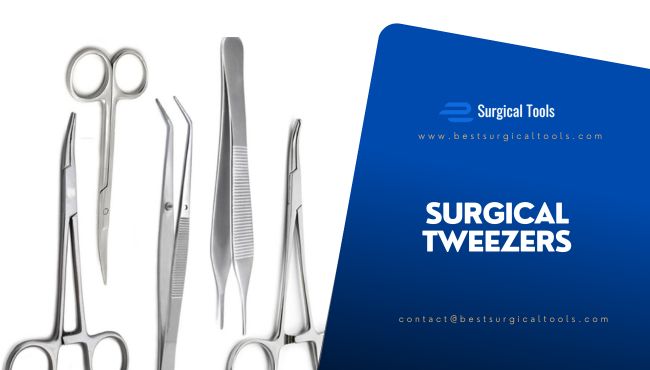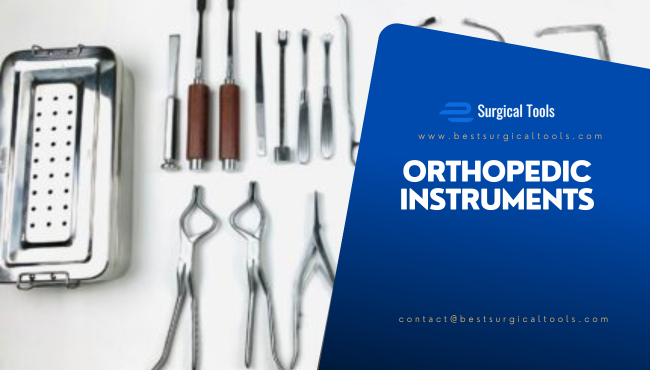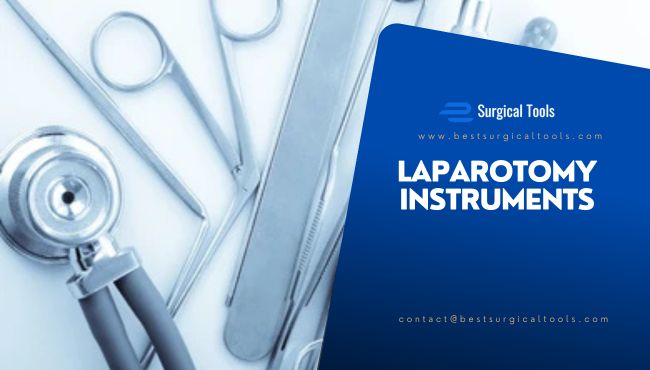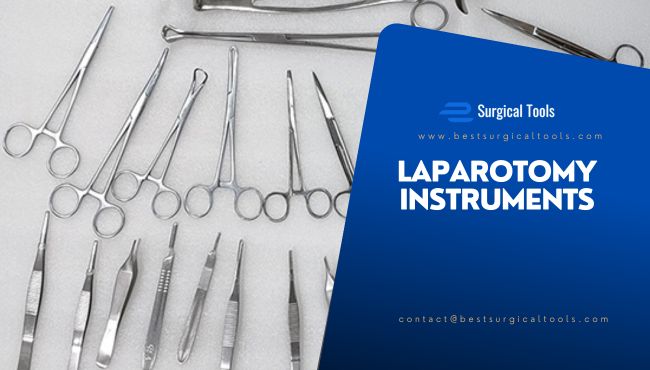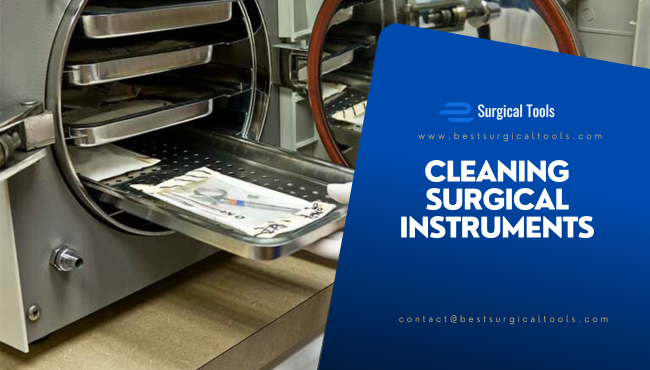
Ultimate Guide to Surgical Scissors: Precision & Performance in Surgery
Surgical scissors are one of the most fundamental tools in medical procedures, playing a critical role in ensuring precision, efficiency, and safety during surgeries. From minor outpatient procedures to complex, life-saving operations, these specialized scissors allow surgeons to make clean, controlled cuts, reducing the risk of tissue damage and postoperative complications. Their versatility makes them essential in a wide range of medical fields, including general surgery, orthopedics, neurosurgery, and plastic surgery.

The quality of surgical operating scissors is directly linked to patient safety and procedural success. High-quality scissors made from medical-grade stainless steel or titanium provide superior sharpness, durability, and corrosion resistance, ensuring smooth cuts with minimal force. Poor-quality or dull scissors can lead to tissue trauma, increased surgical time, and higher risks of infection. Additionally, ergonomic designs enhance the comfort and precision of the surgeon, allowing for more stable hand movements during delicate procedures.
This guide explores everything you need to know about surgical scissors in the U.S., including the different types, best practices for choosing and maintaining them, leading brands, and the latest advancements in surgical instrument technology. Whether you're a healthcare professional looking to invest in high-quality scissors or someone interested in understanding the role of these tools in modern surgery, this comprehensive guide will provide valuable insights.
Understanding Surgical Scissors in the U.S. Healthcare System
The Role of Surgical Scissors in Modern U.S. Hospitals and Clinics
Surgical scissors are indispensable tools in operating rooms, emergency departments, and outpatient clinics across the United States. These precision instruments are used for cutting tissues, sutures, and bandages in a wide range of medical and surgical specialties. From general surgery to specialized fields like neurosurgery and plastic surgery, the right type of surgical scissors enhances procedural efficiency and minimizes tissue trauma.
Compliance with FDA Regulations for Medical Instruments
In the U.S., all surgical instruments, including surgical operating scissors, must comply with regulations set by the U.S. Food and Drug Administration (FDA). The FDA classifies surgical scissors as Class I or Class II medical devices, depending on their intended use. Compliance with FDA standards ensures that surgical scissors meet strict safety, performance, and sterility requirements. Hospitals and surgical centers must source scissors from FDA-approved manufacturers to maintain patient safety and avoid legal issues.
Additionally, surgical scissors must adhere to ISO 13485 standards, which govern the quality management systems for medical devices. This guarantees that the instruments are manufactured with high precision, undergo rigorous testing, and are suitable for surgical use.
The Importance of Choosing Surgical-Grade Stainless Steel and Titanium Scissors
The material of surgical scissors significantly impacts their durability, sharpness, and resistance to corrosion. The two most commonly used materials in the U.S. are:
- Surgical-Grade Stainless Steel: Known for its strength, corrosion resistance, and cost-effectiveness. High-carbon stainless steel enhances durability and maintains sharpness.
- Titanium: Lighter, more flexible, and highly resistant to corrosion. Titanium surgical scissors are often preferred in microsurgeries and delicate procedures due to their precision and lightweight nature.
Hospitals and clinics must invest in high-quality materials to ensure long-lasting, sterile, and efficient surgical instruments that contribute to patient safety and positive surgical outcomes.
Types of Surgical Scissors & Their Uses
Surgical scissors are specialized instruments designed for precision cutting in various medical procedures. Choosing the right type is crucial for ensuring clean incisions, minimizing tissue trauma, and enhancing procedural efficiency. Below is a detailed breakdown of different surgical scissors types, their designs, and their specific uses in the medical field.

Straight vs. Curved Surgical Scissors
- Straight Surgical Scissors: These scissors are primarily used for cutting sutures, gauze, and delicate tissue structures. Their linear design offers enhanced control, making them ideal for surface-level incisions.
- Curved Surgical Scissors: Designed for deeper tissue dissection, curved scissors allow surgeons to maneuver around structures with greater flexibility. The curved blades facilitate better visibility and access, reducing the risk of accidental damage to surrounding tissues.
Blunt-Tip vs. Sharp-Tip Surgical Scissors
- Blunt-Tip Scissors: These scissors are used when precision cutting is required without the risk of accidental punctures. They are commonly used for blunt dissection, allowing surgeons to separate tissues without excessive cutting.
- Sharp-Tip Scissors: These are designed for precise cutting of delicate tissues and sutures. Their fine, sharp tips enable clean incisions, making them essential in procedures requiring extreme accuracy.
Operating Scissors vs. Dissecting Scissors
- Surgical Operating Scissors: These versatile instruments are used for general surgical tasks, including cutting sutures, soft tissues, and dressings. They come in both blunt-blunt and sharp-sharp variations, depending on the procedural needs.
- Dissecting Scissors: Designed for delicate tissue separation, dissecting scissors are used in anatomical dissections and surgical procedures where careful precision is required. They help in preserving surrounding structures while ensuring clean cuts.
Micro Scissors vs. Mayo Scissors vs. Metzenbaum Scissors

- Micro Scissors: Used in microsurgical procedures such as ophthalmic and neurosurgery, micro scissors have ultra-fine blades that allow for extreme precision when handling delicate tissues.
- Mayo Scissors: Known for their durability and strength, Mayo scissors are used for cutting tough tissues like fascia, tendons, and muscles. They come in both straight and curved variations.
- Metzenbaum Scissors: These lightweight, long-handled scissors are specifically designed for cutting delicate soft tissues. They are commonly used in general surgery and plastic surgery for precise dissection.
Specialty Surgical Scissors
Several medical specialties require custom-designed surgical scissors tailored to specific procedures:
- Ophthalmic Scissors: Used in delicate eye surgeries for making precise incisions in corneal and retinal tissues.
- Cardiovascular Scissors: Designed for intricate procedures involving veins, arteries, and heart tissue, ensuring minimal trauma during cardiovascular surgeries.
- Plastic Surgery Scissors: These scissors have ultra-sharp, fine blades for making meticulous cuts in reconstructive and cosmetic surgeries.
Reusable vs. Disposable Surgical Scissors
- Reusable Surgical Scissors: Made from high-quality stainless steel or titanium, these scissors are designed for repeated use after proper sterilization. They offer long-term durability and precision but require careful maintenance.
- Disposable Surgical Scissors: These single-use instruments eliminate the risk of cross-contamination and are commonly used in emergency rooms and outpatient settings where sterilization facilities are limited.
How Each Type is Used in Specific Surgical Procedures
- Straight Mayo Scissors: Commonly used for cutting sutures and thick tissues in general surgery.
- Curved Metzenbaum Scissors: Preferred in soft tissue dissection for plastic and reconstructive surgery.
- Micro Scissors: Essential for delicate microsurgical procedures such as nerve repair and ophthalmic surgeries.
- Blunt-Tip Operating Scissors: Used in neonatal surgeries to minimize the risk of injury to fragile tissues.
The right selection of surgical scissors enhances procedural success by ensuring precision, reducing surgical time, and improving patient outcomes. Understanding their specific functions allows surgeons to choose the best tool for each medical procedure.
How to Choose the Right Surgical Scissors in the U.S.
Selecting the right surgical scissors is crucial for ensuring precision, safety, and longevity. With various options available in the U.S. market, healthcare professionals must consider several factors before making a purchase. Below, we explore the key aspects to evaluate when choosing surgical operating scissors for medical procedures.
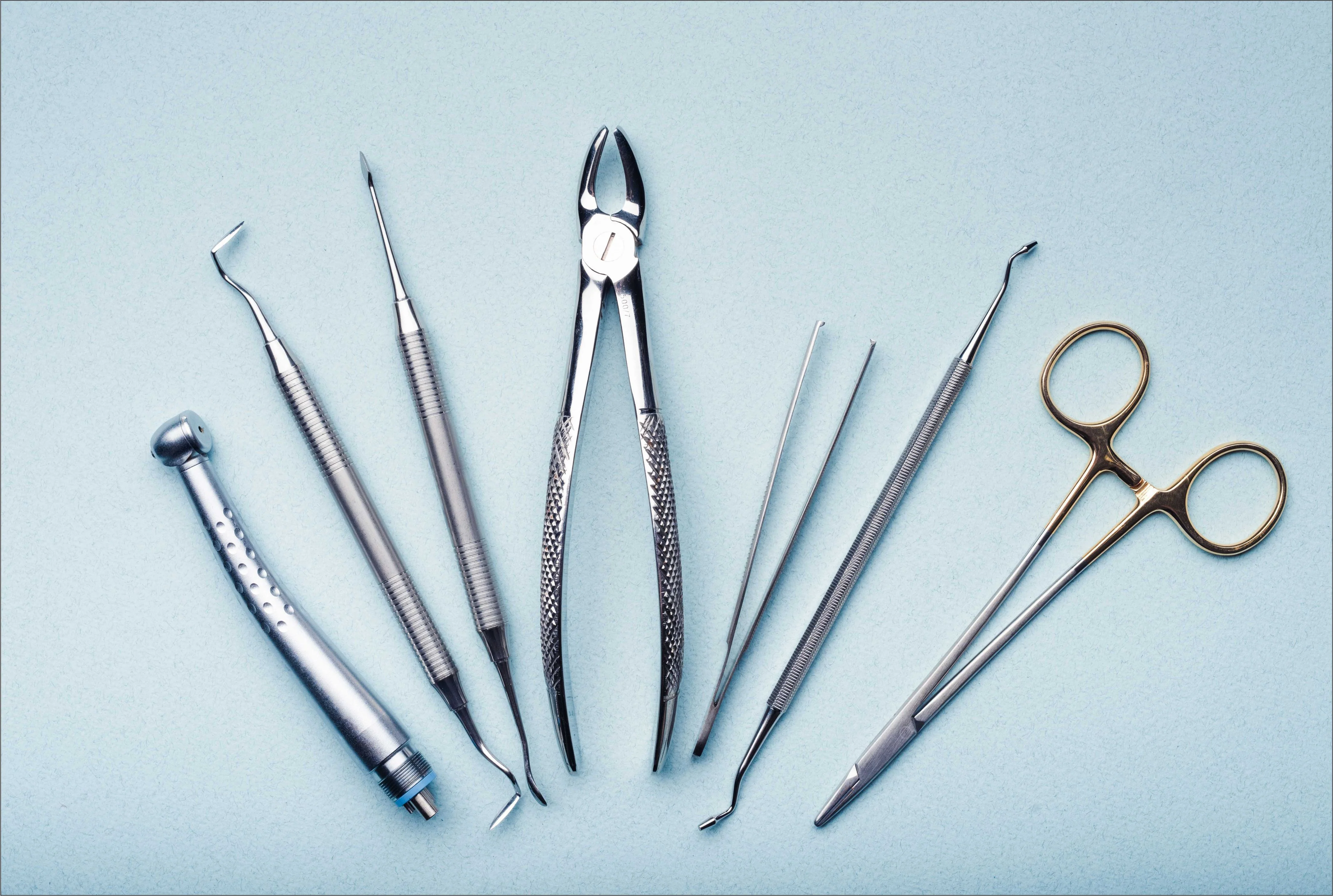
Key Factors to Consider
- Material and Durability
The quality of surgical scissors largely depends on the material used in their construction. The most common materials include: - Medical-Grade Stainless Steel – Offers excellent corrosion resistance, durability, and ease of sterilization. Ideal for general surgery.
- Tungsten Carbide-Tipped Scissors – Provides extra sharpness and longevity, making them suitable for delicate procedures.
- Titanium Scissors – Lightweight, non-magnetic, and highly resistant to corrosion, preferred for specialized surgical applications.
- Blade Type and Cutting Precision
The blade type significantly impacts performance and usability. Options include: - Straight-Blade Scissors – Best for cutting sutures and gauze.
- Curved-Blade Scissors – Designed for precision cutting of soft tissues.
- Micro Scissors – Ideal for fine, detailed surgical procedures such as ophthalmic or neurosurgery.
- Grip and Handle Design for Comfort
Ergonomic design is essential for minimizing hand fatigue and enhancing precision. Features to consider include: - Ring-Handled Scissors – Traditional design with a secure grip.
- Spring-Loaded Scissors – Often used in microsurgery for effortless handling.
- Coated Handles – Provide a better grip, reducing the risk of hand strain.
Balancing Cost vs. Durability
While it may be tempting to opt for low-cost surgical tools, investing in high-quality surgical operating scissors ensures durability, precision, and long-term savings. Cheap instruments often dull quickly, leading to frequent replacements and potential surgical complications. Comparing cost and longevity is essential:
- Premium-grade scissors last longer and maintain sharpness with proper care.
- Mid-range options may provide a balance of affordability and performance.
- Low-cost scissors may compromise surgical accuracy and require frequent sharpening.
Where to Buy High-Quality Surgical Scissors in the U.S.
Finding a reputable supplier is key to acquiring surgical operating scissors that meet industry standards. Some top sources include:
- Medical Equipment Suppliers – Companies like Medline, Henry Schein, and Integra LifeSciences offer FDA-approved surgical instruments.
- Online Marketplaces – Platforms such as Amazon Medical Supplies and McKesson provide a variety of brands with customer reviews.
- Direct Manufacturer Purchase – Buying from established U.S.-based manufacturers ensures quality and compliance with medical standards.
By considering these factors, medical professionals can invest in surgical scissors that offer precision, longevity, and cost-effectiveness, ensuring the highest level of patient care.
Best Practices for Sterilizing & Maintaining Surgical Scissors
Proper sterilization and maintenance of surgical scissors are crucial for ensuring patient safety and prolonging the lifespan of these essential medical tools. Without thorough cleaning and sterilization, bacteria and contaminants can accumulate, leading to infections and complications during surgical procedures. Below, we cover the best methods for sterilizing, maintaining, and inspecting surgical operating scissors to keep them in optimal condition.
Importance of Proper Sterilization to Prevent Infections
Sterilization is a critical step in preventing healthcare-associated infections (HAIs), which can pose severe risks to patients. Since surgical scissors come into direct contact with bodily tissues and fluids, they must be completely free of bacteria, viruses, and other contaminants before each use. Proper sterilization:
- Eliminates pathogens that could cause post-surgical infections.
- Prevents cross-contamination between patients.
- Maintains compliance with U.S. medical safety regulations and CDC sterilization guidelines.
Step-by-Step Guide to Autoclaving Surgical Scissors
Autoclaving is the most effective method for sterilizing surgical operating scissors, ensuring that they are safe for reuse. Follow these steps for proper autoclave sterilization:
- Pre-Cleaning: Rinse the scissors under running water to remove any visible blood or tissue debris. Use a soft brush with an enzymatic cleaner to break down organic matter.
- Disinfection: Submerge the scissors in a medical-grade disinfectant solution for the recommended time.
- Rinse & Dry: Thoroughly rinse the instruments with distilled water and dry them using a lint-free cloth to prevent water spots or rust.
- Packaging: Place the dry surgical scissors in sterilization pouches or trays before autoclaving.
- Autoclave Cycle: Set the autoclave to the recommended temperature (250–270°F) and pressure settings. Run the cycle according to the manufacturer’s guidelines.
- Cooling & Storage: Allow the scissors to cool completely before handling them. Store them in a dry, sterile environment to maintain their integrity.
Common Mistakes to Avoid When Cleaning Medical Scissors
Even with proper sterilization techniques, mistakes can compromise the effectiveness of cleaning. Some common errors include:
- Skipping the pre-cleaning step: Autoclaves do not remove organic debris; they only sterilize surfaces. Any remaining residue can harbor bacteria.
- Using hard water for rinsing: Minerals in tap water can leave deposits on the scissors, leading to corrosion. Always use distilled or deionized water.
- Improper drying techniques: Leaving moisture on the scissors before sterilization can result in rust and degradation over time.
- Overloading the autoclave: Crowding the chamber can prevent steam from fully penetrating all instruments, reducing sterilization effectiveness.
How to Check for Wear and Tear
Regular inspections ensure that surgical scissors remain in excellent condition. Look for the following signs of wear and tear:
- Dull blades: Test sharpness by cutting through a thin surgical glove or gauze. If the cut isn’t clean, the scissors need sharpening.
- Loose or misaligned blades: If the blades don’t close tightly or overlap unevenly, they require adjustment.
- Rust or discoloration: Any signs of rust indicate improper drying or storage and can affect instrument integrity.
- Stiff movement: Scissors should open and close smoothly. If they feel stiff, apply a lubricant designed for medical instruments.
By following these best practices, healthcare professionals can ensure that surgical operating scissors remain sterile, sharp, and functional for every procedure, reducing risks and improving surgical outcomes.
Top Surgical Scissors Brands & Where to Buy in the U.S.
Choosing the right surgical scissors is essential for precision, durability, and patient safety. In the U.S., several brands offer high-quality surgical operating scissors designed for various medical procedures. Whether you're looking for premium instruments or cost-effective alternatives, understanding the top brands and where to buy them can help you make an informed decision.
Overview of Leading U.S. Brands for Surgical Scissors
The U.S. is home to some of the most trusted brands in the medical industry, known for their commitment to quality, precision, and compliance with FDA and ISO standards. Some of the top brands include:
- Miltex (Integra LifeSciences) – Known for producing high-quality, German-forged stainless steel surgical scissors, Miltex offers a wide range of scissors for general and specialized surgical applications.
- Sklar Instruments – A well-known name in surgical instruments, Sklar provides both premium and economy-grade scissors with strict quality control.
- Medline Industries – One of the largest suppliers of surgical operating scissors, Medline balances affordability with quality, making it a popular choice for hospitals and clinics.
- Braun Aesculap – Specializing in precision surgical tools, Aesculap scissors are known for their sharpness, durability, and ergonomic designs.
- Mueller (Cardinal Health) – This brand is recognized for its high-end surgical instruments, offering durability and excellent craftsmanship for medical professionals.

Comparison of Premium vs. Budget-Friendly Options
When selecting surgical scissors, it’s essential to weigh the benefits of premium versus budget-friendly options.
|
Feature |
Premium Surgical Scissors |
Budget-Friendly Surgical Scissors |
|
Material |
High-grade stainless steel, titanium-coated |
Standard stainless steel or alloy-based |
|
Durability |
Longer lifespan, resists corrosion & dulling |
Shorter lifespan, may require frequent replacement |
|
Precision |
Ultra-sharp edges for clean cuts |
May require frequent sharpening |
|
Cost |
Higher price, but long-term value |
Affordable, but may need frequent replacements |
|
Best for |
Surgeons, specialized procedures |
General use, training, disposable settings |
For high-stakes surgical procedures, investing in premium brands is recommended. However, budget-friendly options work well for routine medical use, emergency rooms, and educational institutions.
Where to Buy: Specialty Medical Suppliers, Online Marketplaces & Direct Manufacturers
Finding a reliable source to buy surgical operating scissors is crucial. Here are the best places to purchase high-quality medical scissors in the U.S.:
1. Specialty Medical Suppliers
Medical supply companies offer certified, high-quality instruments that meet U.S. healthcare regulations. Some reputable suppliers include:
Henry Schein Medical – A trusted distributor for hospitals and clinics.
Medline – Offers bulk purchases and competitive pricing.
McKesson Medical-Surgical (mms.mckesson.com) – Provides a wide range of surgical instruments for professionals.
2. Online Marketplaces
For convenience and variety, many medical professionals turn to online retailers, including:
- Amazon Medical Supplies – Offers both premium and budget-friendly options with customer reviews.
- AliMed – A specialized online marketplace for surgical tools.
- Surgical Instruments.com – A dedicated retailer for high-precision surgical instruments.
3. Direct Manufacturers
Purchasing directly from manufacturers ensures authenticity, better pricing, and warranty options. Some leading manufacturers with direct sales include:
- B. Braun Aesculap (www.bbraunusa.com)
- Sklar Instruments (www.sklarcorp.com)
- Miltex (Integra LifeSciences) (www.integralife.com)
Best Recommendations Based on Reviews & Expert Opinions
Based on customer reviews, durability, and expert recommendations, the following surgical scissors are highly rated in the U.S.:
- Best Overall: Miltex Metzenbaum Scissors – Known for exceptional sharpness and durability, ideal for precision cutting.
- Best Budget Option: Medline Mayo Scissors – Affordable yet reliable, great for general surgical use.
- Best for Delicate Procedures: V. Mueller Micro Scissors – Ultra-fine tips for microsurgical applications.
- Best Titanium-Coated Scissors: B. Braun Aesculap Tungsten Carbide Scissors – Long-lasting sharpness with corrosion resistance.
By selecting the right brand and purchasing from a trusted source, medical professionals can ensure they are using high-quality surgical operating scissors that enhance precision and patient safety.
The Future of Surgical Scissors in the U.S.
As medical technology continues to evolve, surgical scissors are undergoing significant advancements to enhance precision, durability, and safety. From AI-assisted surgical tools to eco-friendly alternatives, the future of surgical operating scissors in the U.S. is promising.
Innovations in Robotic and AI-Assisted Surgical Instruments
The rise of robotic surgery has transformed the way surgical procedures are performed. AI-assisted surgical instruments, including robotic arms equipped with precision-cutting tools, are improving accuracy and reducing human error. Although surgical scissors are traditionally manual tools, AI-driven robotic surgery may integrate advanced scissor-like cutting mechanisms for more delicate and minimally invasive procedures.
- Da Vinci Surgical System – A robotic system allowing surgeons to make ultra-precise cuts with minimal invasiveness.
- Automated Suturing and Cutting Devices – AI-powered tools that enhance surgical efficiency.
As these technologies develop, we may see robotic systems utilizing smart surgical scissors with AI-guided precision.
How Smart Materials and Coatings Are Enhancing Scissor Longevity
Traditional surgical operating scissors are made of stainless steel, but modern advancements in material science are leading to the use of:
- Tungsten carbide blades – Increase sharpness retention and reduce wear.
- Titanium coatings – Improve corrosion resistance and longevity.
- Ceramic-edged scissors – Reduce friction and enhance precision.
These materials help extend the lifespan of surgical scissors, ensuring long-term efficiency and cost-effectiveness for healthcare providers.
The Rise of Single-Use and Eco-Friendly Surgical Scissors
With increasing awareness of hospital-acquired infections (HAIs) and sustainability concerns, the demand for single-use surgical scissors is growing. These scissors are:
- Sterile and disposable, reducing the risk of contamination.
- Eco-friendly, made from biodegradable or recyclable materials.
- Cost-effective for specific procedures, eliminating the need for sterilization.
As hospitals seek to reduce their environmental footprint, biodegradable and recyclable surgical scissors may become standard in the industry.
Predictions for the Next Decade in Surgical Instrument Technology
Over the next 10 years, the surgical instrument industry is expected to see:
- Increased automation – AI-assisted cutting tools enhancing precision.
- Nanotechnology integration – Ultra-sharp, self-repairing scissor blades.
- Biodegradable instruments – Reducing medical waste and supporting green initiatives.
- Personalized surgical tools – 3D-printed scissors customized for specific procedures.
With these innovations, surgical operating scissors will continue to evolve, improving efficiency, safety, and sustainability in U.S. healthcare.
Final Thoughts & Expert Recommendations
Recap of Key Takeaways
- Surgical scissors are essential tools in medical procedures, impacting precision and patient safety.
- Investing in high-quality surgical operating scissors ensures durability and efficiency.
- Advanced materials, AI-assisted tools, and eco-friendly alternatives are shaping the future of surgical instruments.
The Importance of Investing in High-Quality Surgical Scissors
Medical professionals should prioritize:
- Premium brands known for precision and durability.
- Proper sterilization and maintenance to extend tool life.
- Keeping up with advancements in smart materials and AI-assisted technology.
Closing Thoughts from Medical Experts and Surgeons
Dr. Michael Anderson, a leading U.S. surgeon, states:
"Choosing the right surgical scissors is just as important as the surgeon's skill. Investing in high-quality instruments not only improves surgical outcomes but also ensures patient safety."
As technology advances, surgical scissors will continue to evolve, offering enhanced performance and sustainability. Whether for hospitals, clinics, or specialized surgeries, selecting the right surgical operating scissors will remain a critical decision for medical professionals across the U.S.
FAQs About Surgical Scissors
1. What are surgical scissors used for?
Surgical scissors are specialized medical instruments used for cutting tissues, sutures, bandages, and other materials during surgical and medical procedures. They come in various types designed for specific functions, such as dissecting, trimming, or making precise incisions.
2. What are the different types of surgical scissors?
There are several types of surgical scissors, including:
- Operating Scissors – Used for general cutting tasks during surgery.
- Dissecting Scissors – Designed for delicate tissue dissection.
- Mayo Scissors – Sturdy and used for cutting heavy tissues.
- Metzenbaum Scissors – Long, thin scissors for cutting delicate tissue.
- Iris Scissors – Small, fine scissors for detailed work in ophthalmology and microsurgery.
3. What materials are surgical scissors made from?
Most surgical scissors are made from high-grade stainless steel to resist corrosion and maintain sharpness. Advanced models may have tungsten carbide tips, titanium coatings, or ceramic edges for enhanced durability and precision.
4. How are surgical scissors sterilized?
Surgical scissors are typically sterilized using autoclaving, which involves high-pressure steam to eliminate bacteria and contaminants. Other sterilization methods include:
- Chemical disinfection
- Ethylene oxide gas sterilization
- Plasma sterilization for heat-sensitive instruments
5. How long do surgical scissors last?
The lifespan of surgical scissors depends on their quality, frequency of use, and maintenance. High-quality stainless steel scissors can last several years with proper care, while single-use scissors are designed for one-time procedures.
6. What are the best surgical scissors brands in the U.S.?
Some of the top brands for surgical scissors in the U.S. include:
- Medline Industries
- Integra LifeSciences
- Sklar Instruments
- B Braun Medical
- Miltex (Integra)
These brands are known for producing high-quality, precision-engineered surgical instruments.
7. What is the difference between reusable and disposable surgical scissors?
- Reusable Surgical Scissors – Made from durable materials and require regular sterilization. They are cost-effective in the long run.
- Disposable Surgical Scissors – Designed for single-use to prevent cross-contamination and eliminate sterilization costs. These are ideal for emergency and high-risk environments.
8. How can I tell if surgical scissors need to be replaced?
Signs that surgical scissors should be replaced include:
- Blunt or dull blades that do not cut smoothly.
- Rust or discoloration, which may indicate corrosion.
- Loose or misaligned blades, reducing cutting precision.
- Difficulty in sterilization due to visible wear and tear.
9. Where can I buy high-quality surgical scissors in the U.S.?
You can purchase surgical scissors from specialty medical suppliers, online marketplaces, and direct manufacturers. Some of the best places to buy include:
- Medline (Official website & Amazon)
- Henry Schein Medical
- McKesson Medical-Surgical
- AliMed
- Surgical supply distributors & hospital procurement departments
10. What advancements are shaping the future of surgical scissors?
Innovations in robotic surgery, AI-assisted tools, and smart materials are improving the functionality of surgical scissors. The use of biodegradable, single-use scissors and self-sharpening blades is also increasing, ensuring better performance and sustainability in the healthcare industry.
These FAQs provide a comprehensive guide to surgical scissors, helping medical professionals make informed decisions about their selection, maintenance, and use.

